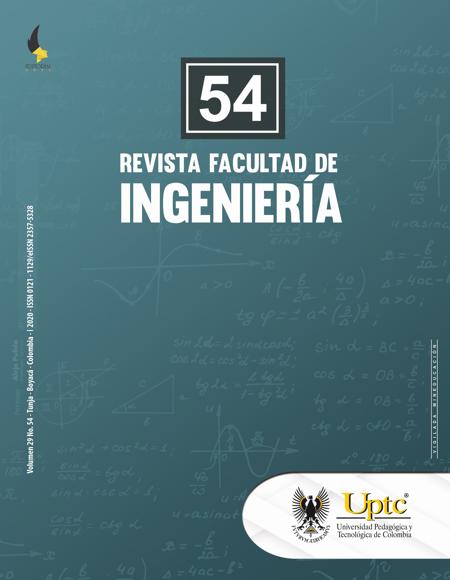Detection of Homicide Trends in Colombia Using Machine Learning

Abstract
The number of violent homicides in Latin America has grown considerably in recent decades, due to the expansion and rise of organized criminal groups in rural and urban areas of the main cities of countries such as Mexico, Colombia and Venezuela. Given their high homicide rate as a consequence of the high crime rate, these countries have been classified among the most violent in the world. According to data reported by the Crime Observatory, the National Police and the Attorney General's Office of Colombia, in 2019 there were 1,032 murders in Bogotá. This data shows a homicide rate of 14.3 per 100,000 inhabitants. From this, it is estimated that between 1960 and 2019, around 226,215 homicides were generated, which is, on average, 3,834 deaths per year. In this work a random forest-based machine learning model is presented, which allows predicting violent homicide (VH) trends in Colombia for the next 5 years. The objective of the model is to serve as an instrument to facilitate decision-making in organizations such as the Prosecutor’s Office and the National Police. The model was evaluated with a dataset obtained from the Criminal, Contraventional and Operational Statistical Information System (SIEDCO in Spanish) of the Prosecutor's Office, which has 2,662,402 records of crimes committed in Colombia from 1960 to 2019.
Keywords
data mining, homicide, machine learning, random forest
Author Biography
Hugo Armando Ordoñez-Eraso, Ph. D.
Roles: Investigation, Formal analysis, Model definition, Model validation.
César Jesús Pardo-Calvache, Ph. D.
Roles: Investigation, Supervision, Methodologhy, Validation, Writing - review & edition.
Carlos Alberto Cobos-Lozada, Ph. D.
Roles: Investigation, Supervision, Methodology, Validation, Writing - review & edition.
References
[1] UNODOC, Global Study on Homicide - Gender-related killing of women and girls. In Unodoc, 2019. https://doi.org/10.1023/B:.0000037731.28786.e3
[2] A. Vazsonyi, J. Wittekind, L. Belliston, and T. Loh, Global Study on Homicide - Homicide trends, patterns and criminal justice response, 2019. https://doi.org/10.1023/B:JOQC.0000037731.28786.e3
[3] M. M. Rogers, and J. E. Storey, “Elder homicide: A systematic literature review,” Aggression and Violent Behavior, vol. 48, pp. 141-151, 2019. https://doi.org/10.1016/j.avb.2019.08.008
[4] F. Li, S. Liu, X. Lu, Y. Ou, and P. S. F. Yip, “Application of the injury scales in homicides,” Forensic Science International, vol. 292, pp. 83-89, 2018. https://doi.org/10.1016/j.forsciint.2018.09.010
[5] M. C. Ingram, and M. Marchesini da Costa, “Political geography of violence: Municipal politics and homicide in Brazil,” World Dev., vol. 124, 2019. https://doi.org/10.1016/j.worlddev.2019.06.016
[6] O. Fals Borda, “La Violencia en Colombia,” Entornos, vol. 29 (2), p. 27, 2016. https://doi.org/10.25054/01247905.1260
[7] M. Neira, and N. H. Martínez, Documentos de Política Pública y Armas y homicidios, Bogotá D. C.: Ministerio de Salud y Protección Social, 2019.
[8] D. E. Goin, K. E. Rudolph, and J. Ahern, “Predictors of firearm violence in urban communities: A machine-learning approach,” Health & Place, vol. 51, pp. 61-67, 2018. https://doi.org/10.1016/j.healthplace.2018.02.013
[9] R. Katuwal, P. N. Suganthan, and L. Zhang, “Heterogeneous oblique random forest,” Pattern Recognition, vol. 99, e107078, 2020. https://doi.org/10.1016/j.patcog.2019.107078
[10] J. L. Speiser, M. E. Miller, J. Tooze, and E. Ip, “A comparison of random forest variable selection methods for classification prediction modeling,” Expert Systems with Applications, vol. 134, pp. 93-101, 2019. http://doi.org/10.1016/j.eswa.2019.05.028
[11] W. C. Regoeczi, and T. D. Miethe, “Homicide,” in International Encyclopedia of the Social & Behavioral Sciences, 2015.
[12] C. Echandía, “Dimensión regional del homicidio en Colombia,” Coyuntura Social, vol. 17, pp. 89-103, 1997.
[13] F. Humberto, S. Murillo, J. Chica, A. Rodríguez, and G. De Cortázar, “The spatial heterogeneity of factors of feminicide : The case of Antioquia- Colombia,” Applied Geography, vol. 92, pp. 63-73, 2018. https://doi.org/10.1016/j.apgeog.2018.01.006
[14] F. J. Escobedo, N. Clerici, C. L. Staudhammer, A. Feged-rivadeneira, J. Camilo, and G. Tovar, “Land Use Policy Trees and Crime in Bogota , Colombia : Is the link an ecosystem disservice or,” Land use policy, vol. 78, pp. 583-592, 2018. https://doi.org/10.1016/j.landusepol.2018.07.029
[15] A. M. Pardo-Monta, “Violence in Colombia and Mexico: trend and impact on life expectancy of homicide mortality between 1998 and 2015,” Public Health, vol. 3, pp. 1-8, 2018. https://doi.org/10.1016/j.puhe.2018.06.001
[16] N. M. Valencia, “Proceso de reconstrucción de memoria,” Revista de Estudios Sociales, vol. 9, pp. 13-38, 2013.
[17] L. C. Cartagena, “Los estudios de la violencia en Colombia antes de la violentología,” Diálogos Revista Electrónica, vol. 17 (1), pp. 1-30, 2015. https://doi.org/10.15517/dre.v17i1.18103
[18] K. Tardiff, P. M. Marzuk, K. Lowell, L. Portera, and A. C. Leon, “A study of drug abuse and other causes of homicide in New York,” Journal of Criminal Justice, vol. 30 (4), pp. 317–325, 2002. https://doi.org/10.1016/S0047-2352(02)00132-0